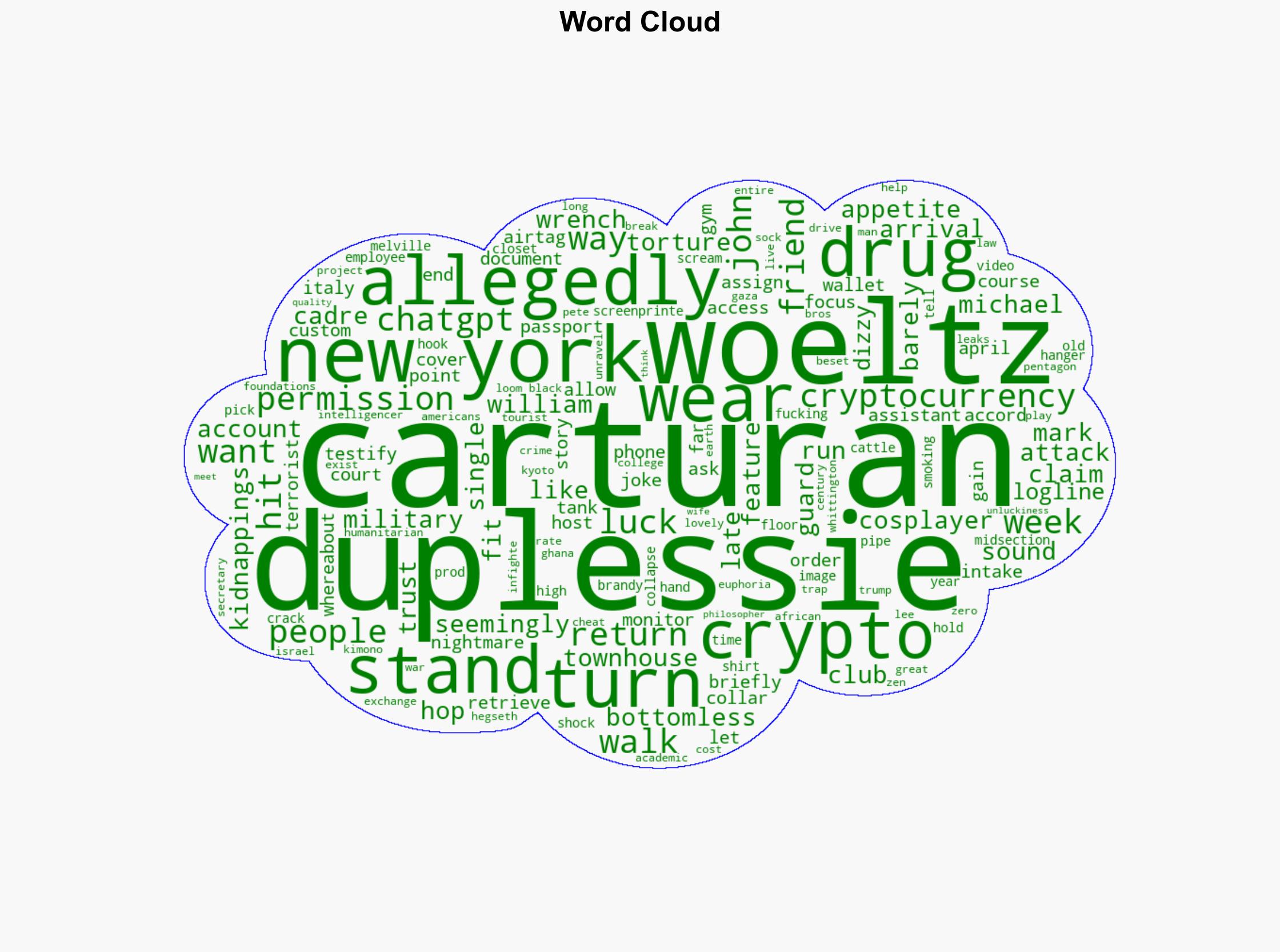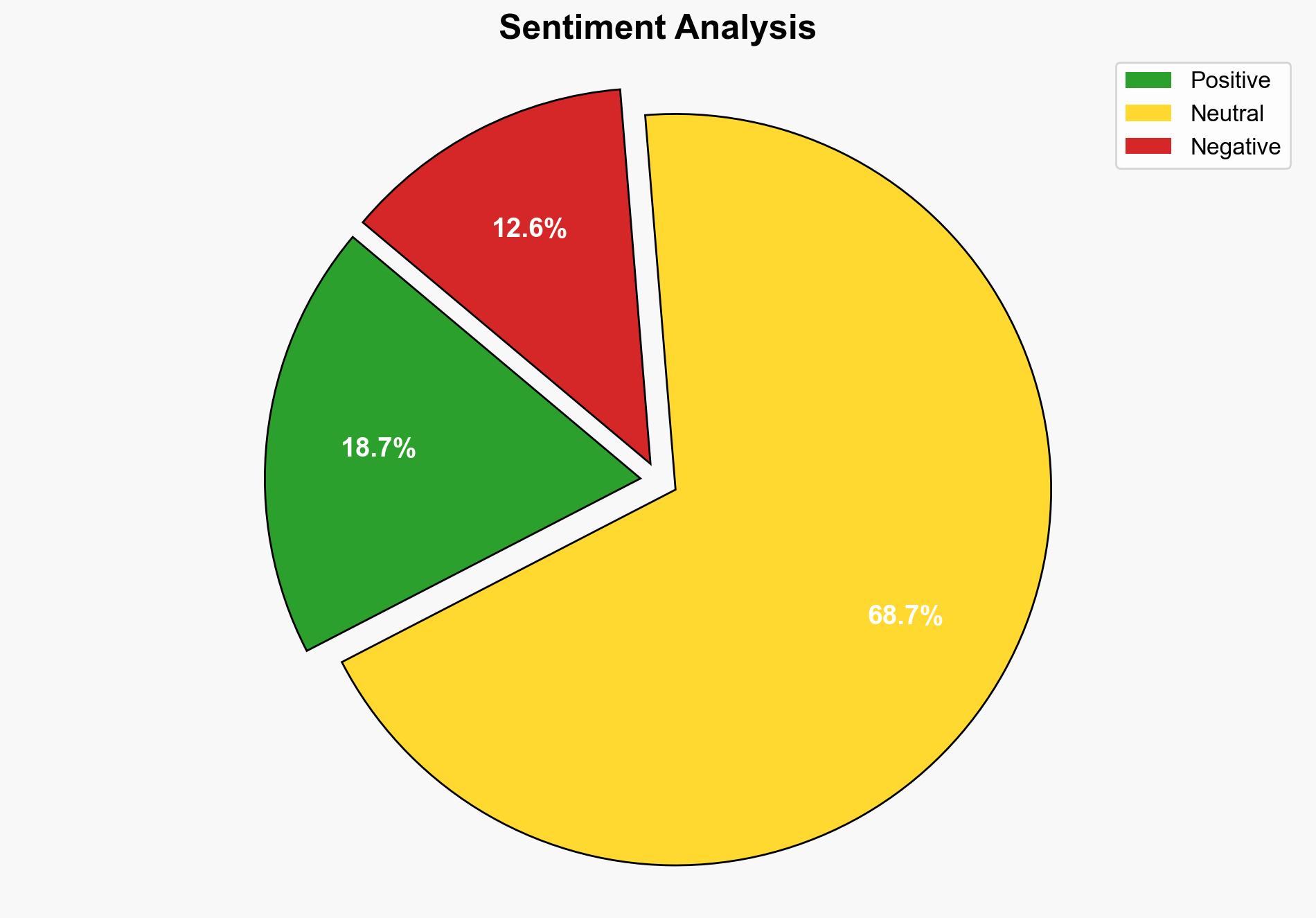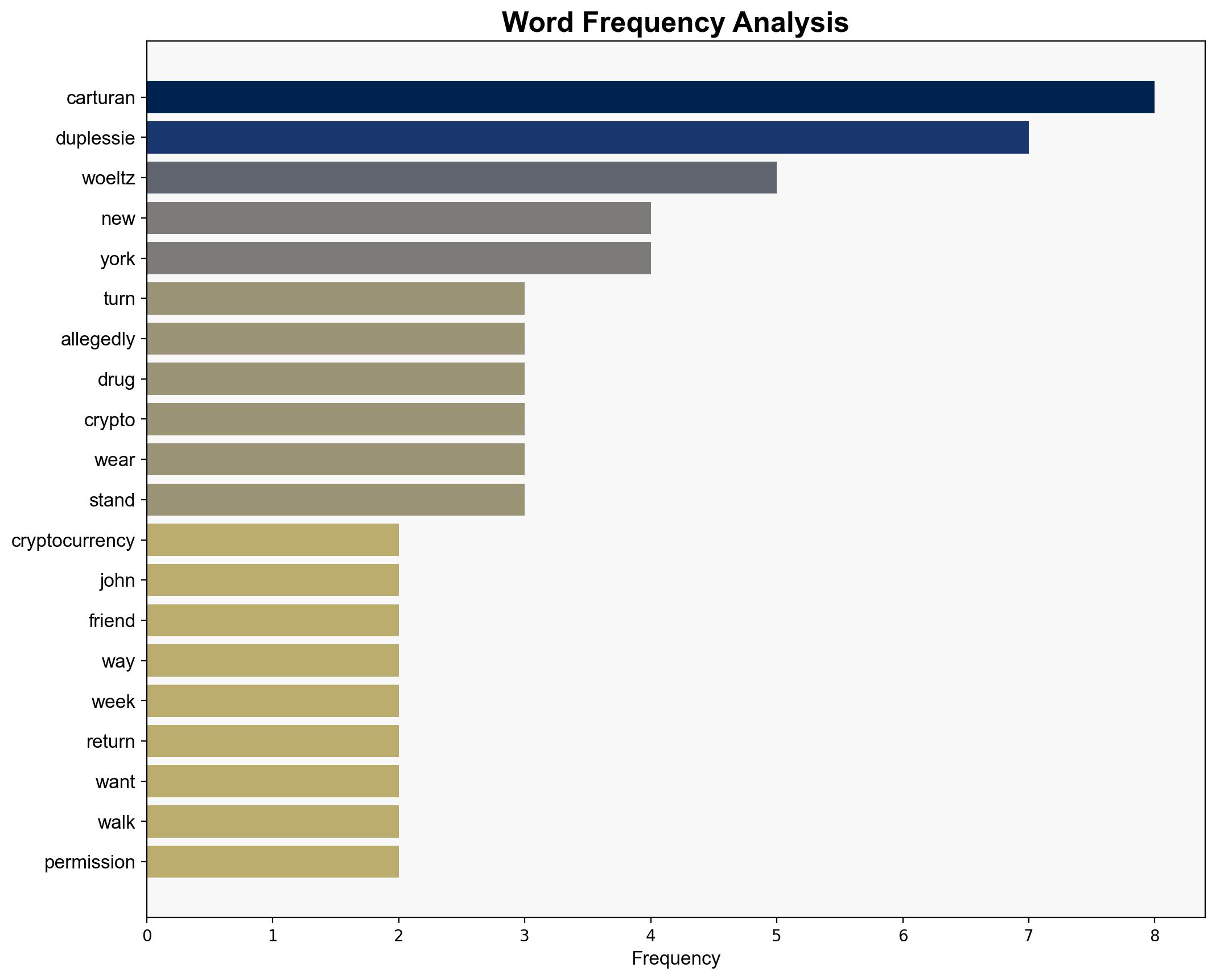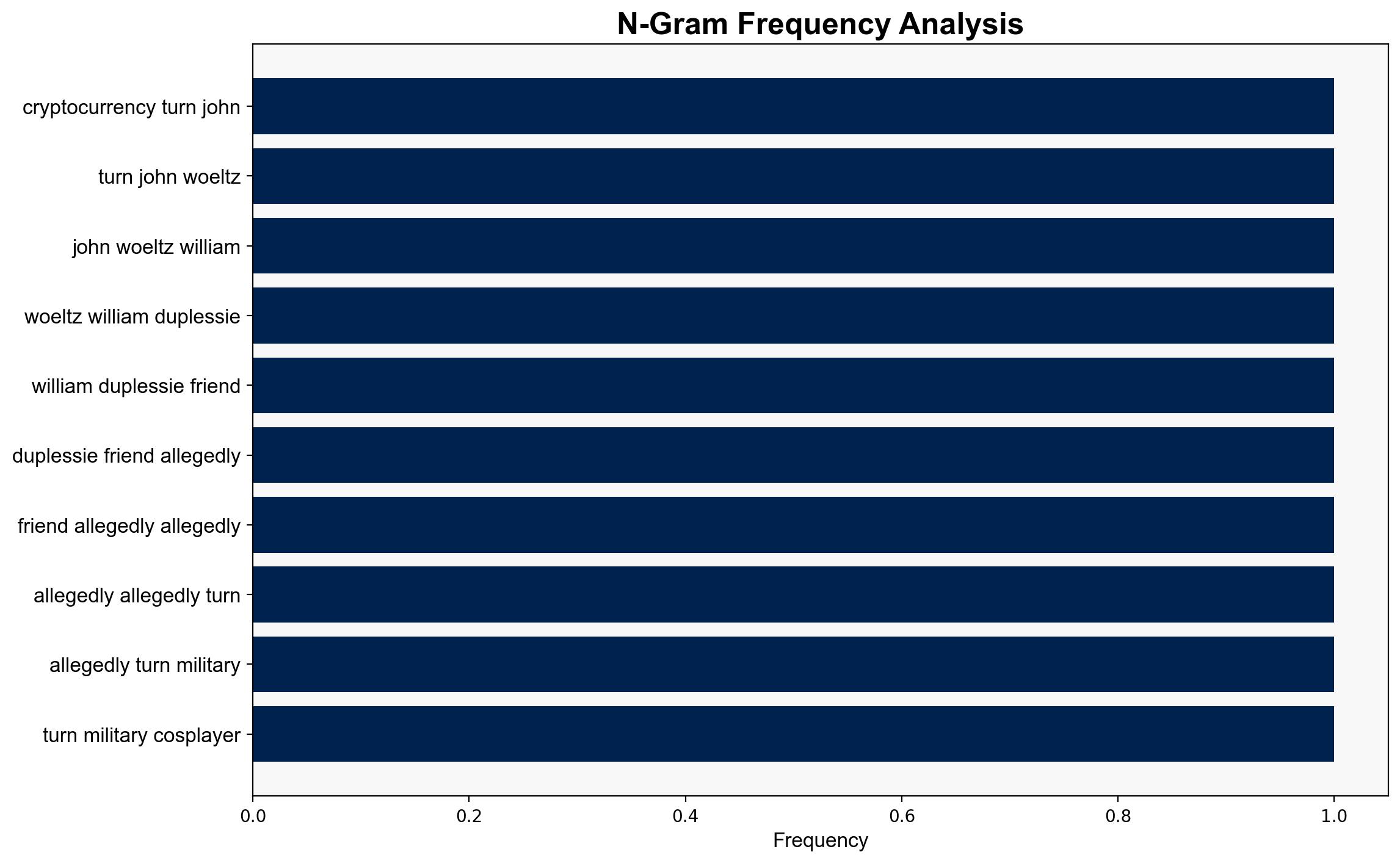The Crypto Maniacs and the Torture Townhouse – Longreads.com
Published on: 2025-08-12
Intelligence Report: The Crypto Maniacs and the Torture Townhouse – Longreads.com
1. BLUF (Bottom Line Up Front)
The most supported hypothesis suggests that the primary motive behind the actions of John Woeltz and William Duplessie was financial gain through accessing Michael Carturan’s cryptocurrency assets. Confidence level is moderate due to inconsistencies in the narrative and lack of corroborative evidence. Recommended action includes further investigation into the financial transactions and digital footprints of the involved parties to substantiate claims and uncover potential broader criminal networks.
2. Competing Hypotheses
1. **Financial Motive Hypothesis**: Woeltz and Duplessie aimed to gain access to Carturan’s cryptocurrency assets, using coercion and intimidation to achieve their goal. This is supported by the alleged actions of restricting Carturan’s movements and attempts to retrieve his crypto wallet.
2. **Personal Vendetta Hypothesis**: The actions were driven by personal grievances or vendettas, possibly exacerbated by drug use and personal conflicts, with the cryptocurrency aspect being secondary or incidental.
Using the Analysis of Competing Hypotheses (ACH) 2.0, the Financial Motive Hypothesis is better supported due to the structured and deliberate nature of the actions taken to control and monitor Carturan, aligning with a calculated attempt to access financial assets.
3. Key Assumptions and Red Flags
– **Assumptions**: It is assumed that the primary objective was financial gain, based on reported behaviors and court documents. This assumes rational behavior from the perpetrators.
– **Red Flags**: The narrative contains inconsistencies, such as the unclear timeline of events and the lack of direct evidence linking actions to the alleged financial motive. The role of drug influence introduces potential cognitive bias.
– **Blind Spots**: Limited information on the background and motivations of Woeltz and Duplessie, as well as the absence of independent verification of Carturan’s claims, presents a significant gap.
4. Implications and Strategic Risks
The incident highlights potential vulnerabilities in cryptocurrency security and the risks of coercion in accessing digital assets. It underscores the need for robust cybersecurity measures and legal frameworks to address crypto-related crimes. There is a risk of similar incidents escalating if not addressed, potentially involving larger criminal networks or international actors exploiting these vulnerabilities.
5. Recommendations and Outlook
- Conduct a thorough investigation into the digital and financial activities of the involved individuals to trace any illicit transactions or connections to broader networks.
- Enhance cybersecurity protocols for cryptocurrency holders, emphasizing the importance of secure storage and transaction practices.
- Scenario projections:
- Best Case: Investigation reveals isolated incident, leading to improved security measures and legal deterrents.
- Worst Case: Uncovers a larger network exploiting cryptocurrency vulnerabilities, necessitating international cooperation and policy reform.
- Most Likely: Incident remains isolated but prompts increased awareness and preventive measures within the crypto community.
6. Key Individuals and Entities
– John Woeltz
– William Duplessie
– Michael Carturan
7. Thematic Tags
national security threats, cybersecurity, counter-terrorism, regional focus





